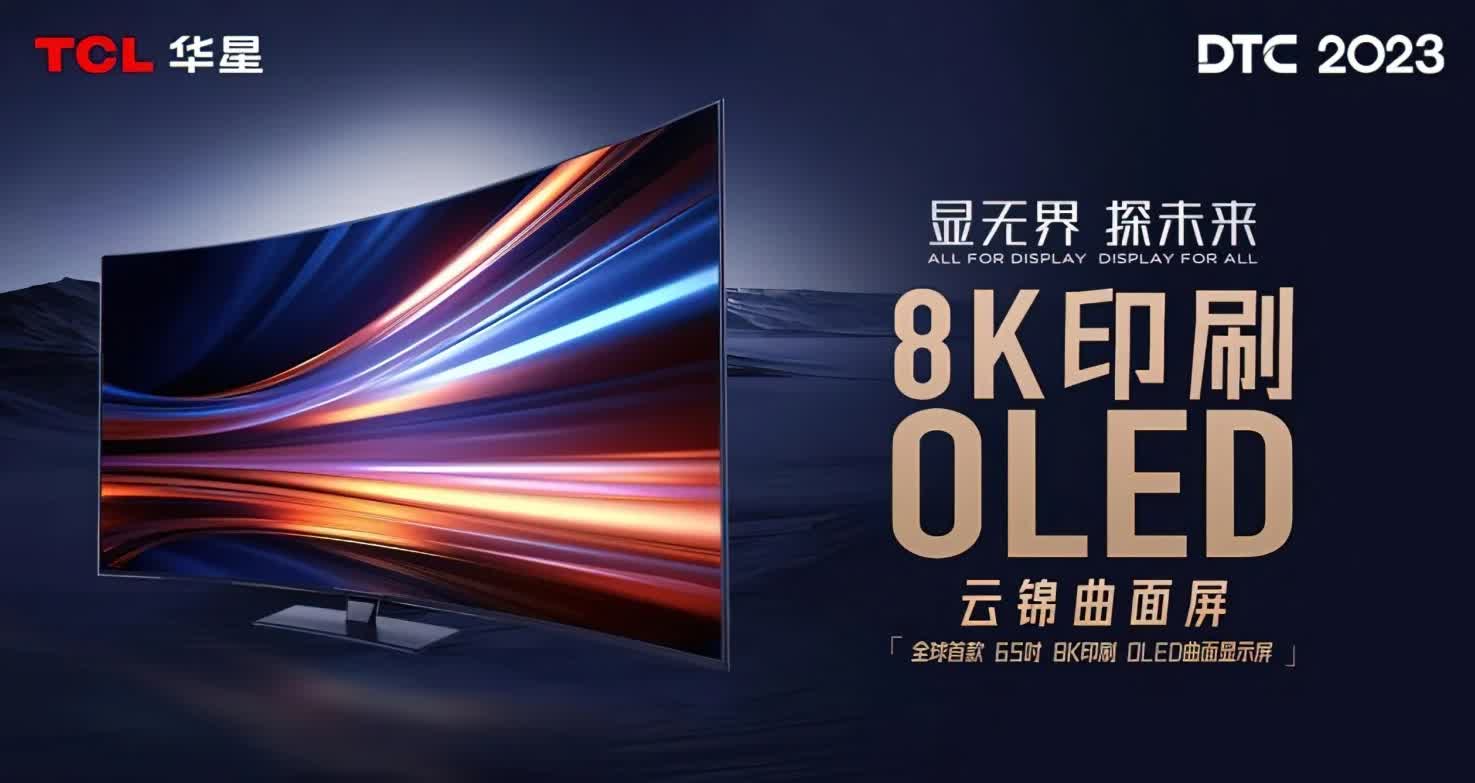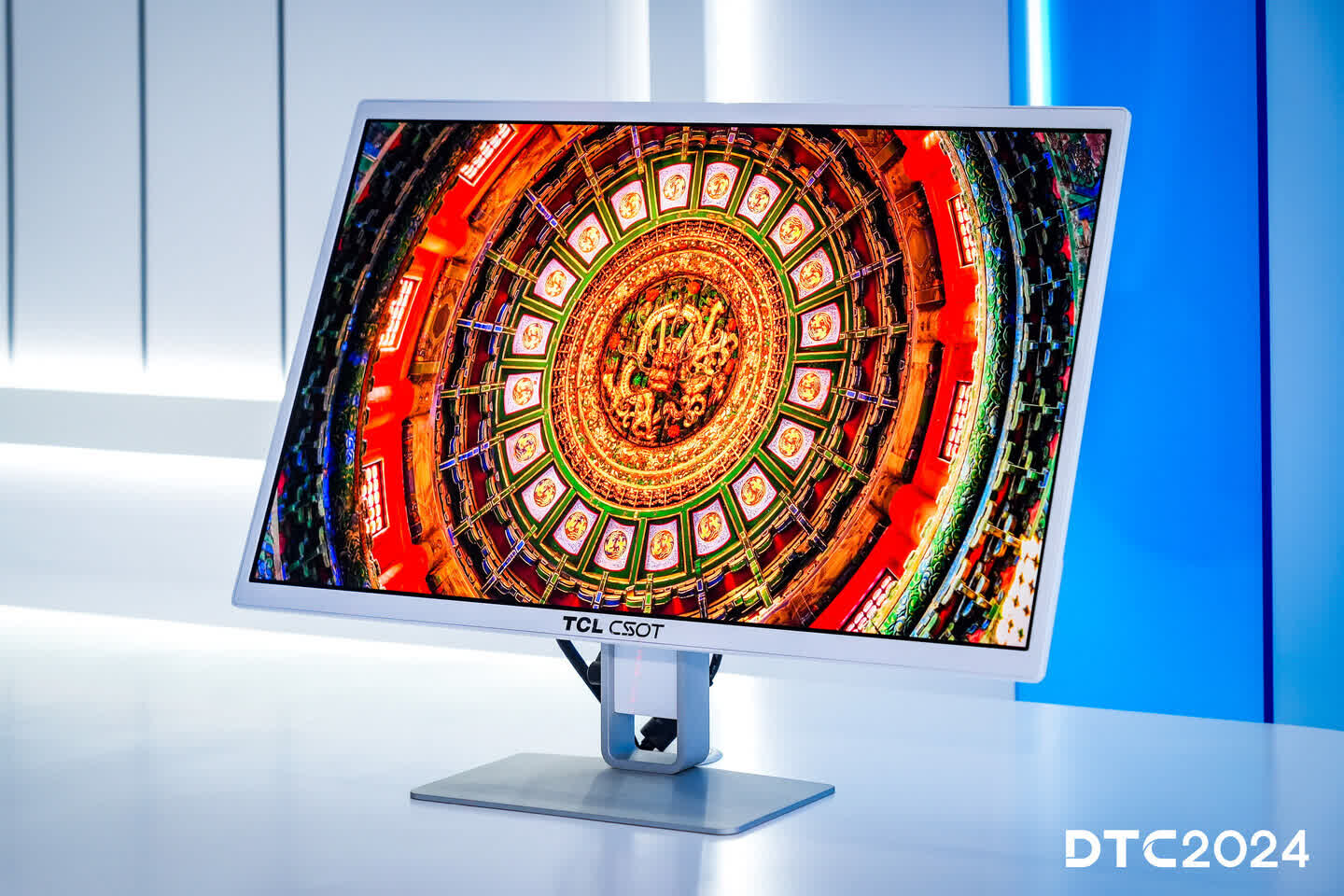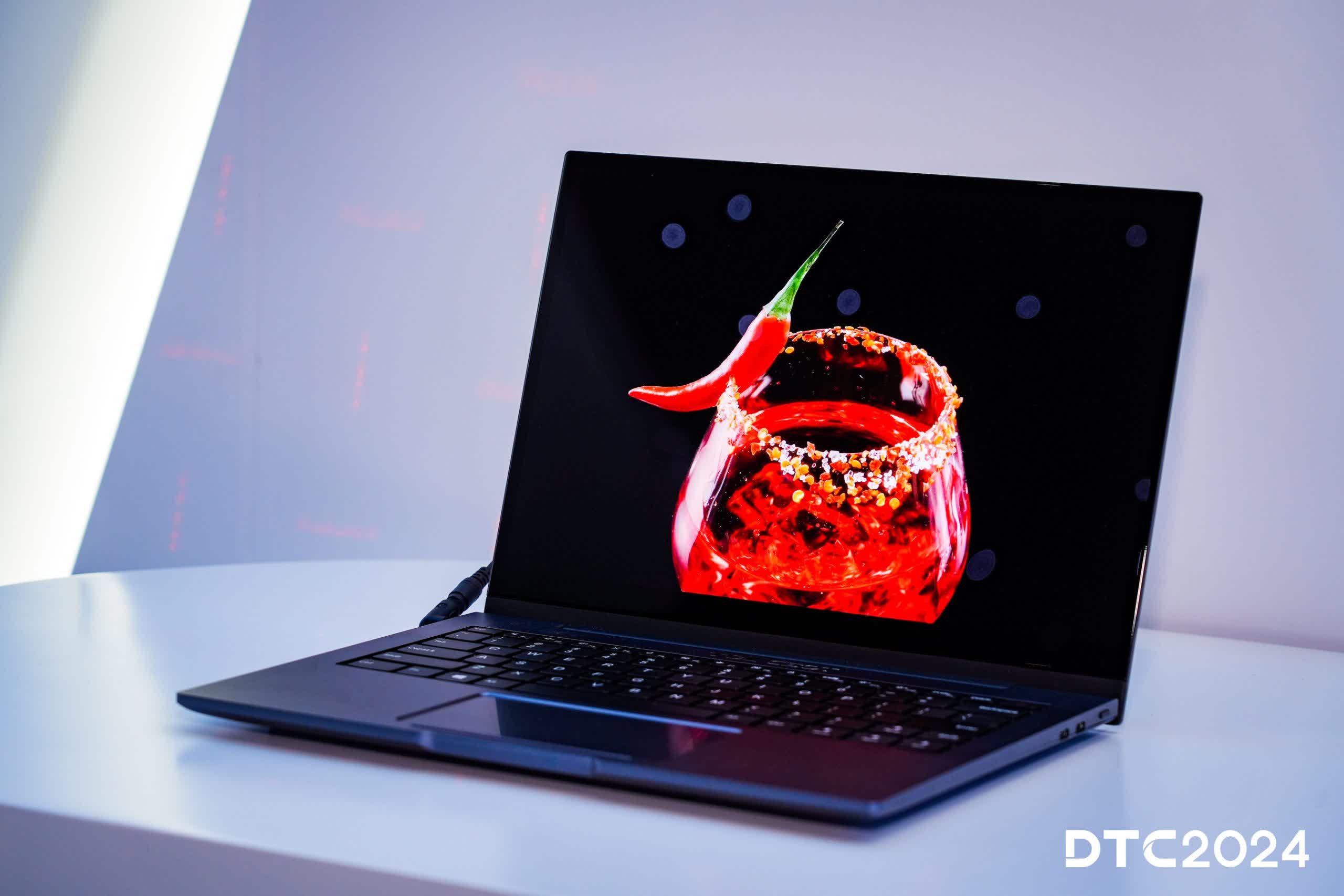What just happened? TCL's pledge to make cheaper and less power-hungry OLED monitors began in earnest this week when the Chinese company officially started mass production of inkjet-printed OLED displays. The first product isn't something consumers would be interested in, though: a 21.6-inch 4K OLED panel designed for medical monitors. However, TCL did also unveil a 27-inch prototype.
TCL CSOT, the display making subsidiary of TCL, has been talking about its longer-lasting, cheaper to make, and less power-hungry inkjet-printed OLEDs for a while, having shown off several prototypes in the past.
The company says it has now begun mass production of these panels, the first of which is a 21.6-inch 4K model. That's an unusual size, but TCL CSOT said it's designed for professional use, mainly within the medical industry.
The panel features a 204 PPI density, 99% coverage of the DCI-P3 color space, a contrast ratio of more than 1,000,000:1, and a maximum brightness of 350 nits.

TCL CSOT also unveiled a more traditional 27-inch inkjet-printed panel designed for monitors. It has a 4K resolution, along with side-by-side RGB OLED pixels, a 120Hz refresh rate, 250 nits of full-screen brightness, and 600 nits of peak brightness.
These panels aren't as bright as the ones from LG Display and Samsung Display, but they do have advantages. As the name suggests, the technique uses large, precise inkjet printers to produce the displays. This reduces the amount of generated waste material compared to traditional OLED production, which relies on evaporation processes in which the organic materials are deposited onto a glass sheet through a thin metal stencil.
This means that TCL CSOT's panels can be produced at a lower price – a 20% reduction in total costs, according to the firm – so they could find a place in more wallet-friendly OLED products. It's also claimed that the manufacturing process is 30% faster.
TCL CSOT says its printed RGB OLED has a 50% reduction in light loss due to internal reflection, and a 1.5 times improvement in light output efficiency. The lifespan has also been significantly enhanced thanks to a higher aperture ratio and more durable materials.
TCL CSOT will produce its OLED panels using Gen 5.5 glass substrates measuring 1,300 × 1,500 mm. The process utilizes technology acquired from Japanese inkjet-printing pioneer JOLED, which filed for bankruptcy in 2023.
As reported by oled-info, TCL CSOT will expand its lineup in 2025 with more panel options. The company still hasn't decided whether to proceed with a larger 8.5-Gen inkjet production line.
Inkjet printing is currently used in the encapsulation layer deposition process in most modern OLED production and to deposit the quantum dots in Samsung QD-OLEDs. TCL is expanding it into the emitters and other stack materials.
TCL CSOT also unveiled the world's first 2.8K 14-inch QD-EL display, made using the inkjet-printing process. Also known as NanoLED, QDEL, or QD-LED, this "Quantum Dot Electroluminescent" (QD-EL) technology eliminates the need for LED backlights or OLED layers. Instead, quantum dots generate color and brightness directly from electrical energy, enabling thinner, cheaper displays.
Compared to OLED and LCD, QD-EL offers superior color purity, brightness, and viewing angles, while covering a larger portion of the BT2020 color gamut for richer, more detailed visuals. The display supports variable refresh rates from 30Hz to 120Hz, though it's still just a prototype.

